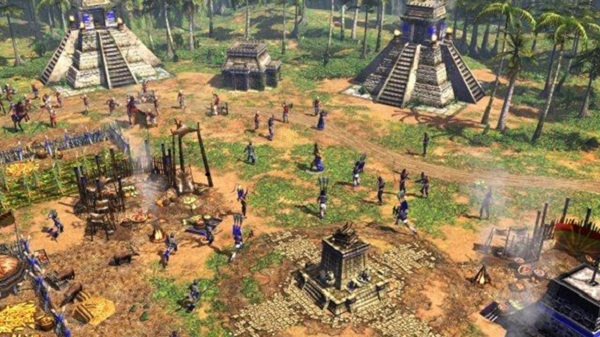
The Messenger allows a player to send for military aid from other Iroquois League tribes like the Cayuga, Onondaga and Seneca, or mercenaries from neighboring allies like the Huron, Cree and Cherokee - sure to please players looking for a big shipment of units in the late game.Age of Empires III: The WarChiefs is the first official expansion of Age of Empires III. The War Leader offers a variety of useful military shipments for mid-level HCs, including boosts in attacks and hitpoints. The War Leader and Messenger contain some of the most exciting new shipments. Instead of buildings, the council is comprised of five leaders: the Chief, the War Leader, the Shaman, the Wise Woman and the Messenger. Tribal Council The Tribal Council is the native version of the European Home City. An Iroquois player will also want to keep the War Chief with his army, since the War Chief increases the hitpoints of any nearby military units. Another tactic is to deploy Mantlets on the frontline to soak up damage while flanking the enemy with cavalry or focus firing with Tomahawks and Musket Runners. A Light Cannon is also available for anti-infantry and anti-artillery support.Ī popular Iroquois army is Tomahawks and Aennas backed up with Rams to serve up destruction on enemy towns. The Ram serves as the main siege unit and deals as much damage to buildings as European Mortars. The Mantlet returns from Age3 as well, playing a supporting role as a unit that absorbs lots of damage. Iroquois cavalry units consist of the Horseman, a light mounted warrior with a melee attack, and the Musket Rider, a ranged anti-cavalry similar to the Dragoon.

Musket Runners also have the stealth ability making them very effective for ambushes. In the third age, the Musket Runner appears on the scene as a superior counter-infantry unit. The Aenna, a bow-and-arrow unit, costs only Food and is an effective early raider. Their main unit is the Tomahawk Warrior, a ranged tomahawk-throwing fighter that is the Iroquois equivalent of the Musketeer. The Iroquois have a well-balanced mix of military with strong infantry, cavalry, and siege. This made the Iroquois a perfect transition civilization for players familiar with the original European civs. Iroquois Military Historically, Iroquois warriors greatly benefited from trade with the Europeans, which gave them access to firearms and cannons. And the Iroquois' unique, first age Founder dance produces additional Travois units. The Gift dance increases experience trickle, resulting in faster shipments from the Tribal Council. Selecting the Fertility dance speeds up all unit production, giving an Iroquois player a head start in villager buildup. The Firepit is a first age structure that can significantly alter the early game. An Iroquois player can get a jump on treasure hunting with the War Chief's Nature Friendship ability instead of killing guardians, he converts them and quickly builds up a large treasure hunting party. Instead of an Explorer, the Iroquois start with a War Chief. Using the Travois, the Iroquois player can quickly adapt to a resource heavy map or place his War Hut early for territorial control near Trading Post sites or natural choke points. These units can build early age buildings like the Longhouse, Firepit, Dock, Market, Farm or even the War Hut. In addition to their starting villagers, the Iroquois also get two Travois. The Iroquois in Age of Empires 3 The Iroquois gather resources at about the same rate as their European counterparts, but they have more flexibility at the start of the game.

After the war, many of the Iroquois that had joined the British resettled in Canada. Some of the tribes sided with the British, while others joined the colonial cause. In the late 1700s, the Iroquois Confederacy fractured as the American Revolution began. During the 1600s, the Iroquois were frequently allied with the English against the French and their traditional native enemies, the Huron. They were one of the strongest powers on the North America continent throughout the 17th and 18th centuries, reaching the height of their power in 1680. The Iroquois, a native American civilization centered in what is today upstate New York, were a confederation of several tribes that controlled a vast expanse of territory by the time the Europeans arrived on the shores of New England.


 0 kommentar(er)
0 kommentar(er)
